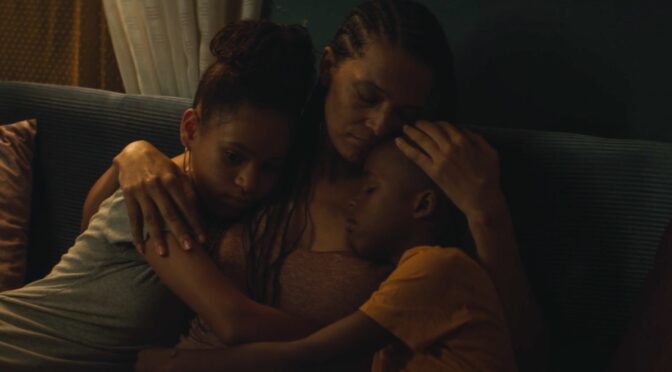 BANTÚ MAMA is a film that never entirely gives its audience the complete picture painted in the mind of its characters. However, by allowing relationships to develop without over-laden dialogue and instead relying on the team’s visual craft and acting skills to sketch out this story, the film sets a touching and engaging tale in motion.
BANTÚ MAMA is a film that never entirely gives its audience the complete picture painted in the mind of its characters. However, by allowing relationships to develop without over-laden dialogue and instead relying on the team’s visual craft and acting skills to sketch out this story, the film sets a touching and engaging tale in motion.
Writer and producer Clarisse Albrecht also leads the cast here as Emma, a French-Cameroonian woman to whom we’re introduced at her workplace in Paris and then her home (complete with pet parrot). She travels to a resort in the Dominican Republic, but it is apparent – after a pointed but deft visual cue of the sort Ivan Herrera’s direction seems to excel in – her trip is not all about relaxation. After she is arrested but escapes the clutches of local law enforcement, three children – siblings T.I.N.A. (Scarlett Reyes), $hulo (Arturo Perez), and Cuki (Euris Javiel) – shelter her and come to form a bond with the fugitive.
“Albrecht carries the opening stretch of the film effectively by herself. Her anxiety is palpable while she waits for her return trip to Paris, solidifying the change in tone without speaking a word.”
Albrecht carries the opening stretch of the film effectively by herself. Her anxiety is palpable while she waits for her return trip to Paris, solidifying the change in tone without speaking a word. After a particularly arresting, if somewhat contrived, transition scene, her chemistry with the three younger cast members drives the film thereon.
A shared African heritage is an engaging strand through which the characters – otherwise normally separated by an ocean and relative poverty levels – begin to connect. Cuki innocently asks Emma if Cameroon is in Haiti, and the children and Emma exchange the names for similar dishes in their respective home cuisines. The bond Emma develops with T.I.N.A. is particularly well handled, with a standout scene showing Emma help her with a headscarf, developing the different modes of sartorial expression she can achieve with it. It’s a delicate, characterful, but culturally specific moment that builds the relationship between characters without reams of dialogue.
“Throughout this, the film looks superb, especially in the scenes as Emma escapes from the authorities.”
Throughout this, the film looks superb, especially in the scenes as Emma escapes from the authorities. The film arguably loses some of its darkly lyrical look as it progresses, with segments that do not take place in artfully managed nighttime lighting looking inherently less dramatic. Still, as the character work increasingly becomes the film’s dominant form of expression, this shift in visual tone makes sense from a thematic progression – as Emma emerges from the dark, she finds some light in the younger two siblings.
The script takes a couple of liberties with plausibility relating to Emma’s apprehending – or not – by the authorities. Still, those contrivances can be forgiven for what is set up and the story the film builds around them: a tale of shared connection, challenges and culture separated by little more than geography and time, and an illustration of how that connection can be harnessed to offer a brighter hope for the future.

